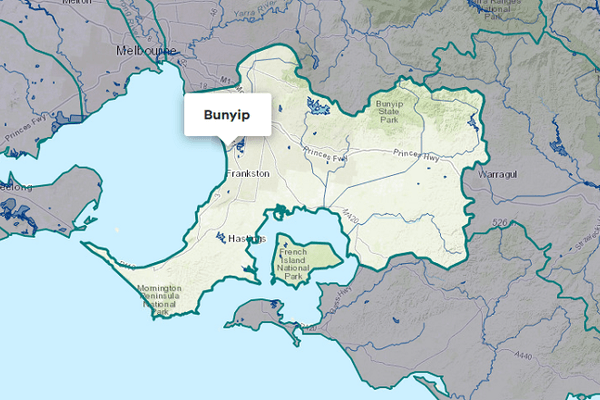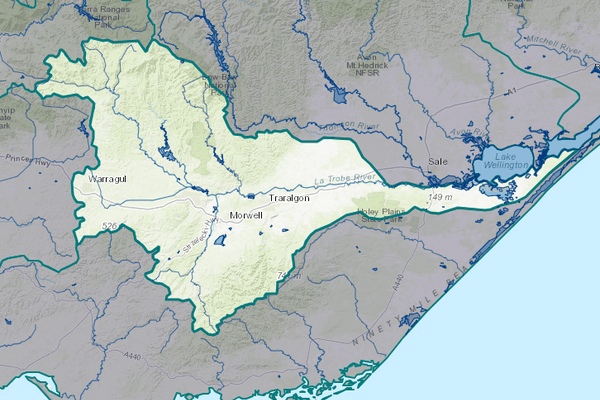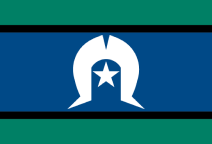About the area
- The major rivers of South Gippsland are broadly south-flowing and include the Bass, Powlett, Tarwin, Franklin, Agnes, Albert and Tarra rivers. All of these rivers are unregulated, although the Tarwin and Powlett catchments have on-stream storages for domestic water supply.
- These rivers flow from the Strzelecki and Hedley ranges through productive agricultural land as well as areas of high conservation value, including Wilsons Promontory and Tarra Bulga National Park.
- Mean annual rainfall ranges from below 600 mm in the east to above 900 mm across the majority of the basin.
- The desalination plant near Wonthaggi produces desalinated water that is transferred into Cardinia Reservoir. The accounting for this is included in the Yarra Basin.
More information on water management and accounting is detailed in Water explained.
2021-22 overview
Available water
Catchment inflow was similar to the previous year.
Licensed diversion restrictions
There were fewer restrictions on licensed diversions than the previous year.
Water use
A similar volume of water was diverted for consumptive purposes to the previous year.
When compared to the previous year, in 2021-22:
- less rainfall was received, though catchment inflows were similar
- storage levels declined to lower levels
- there were fewer restrictions on licensed diversions from unregulated streams
- a similar volume of water was diverted from the basin for consumptive uses.
Climate
Rainfall
In 2021-22, rainfall in the South Gippsland basin was average in the west and above average in the east, lower than the year before.
River basin water balance
In 2021-22, 27,115 ML of water was diverted for consumptive uses: town, domestic and stock, irrigation and commercial supply. This was similar to the 25,926 ML diverted in the previous year.
Water balance table
The table below shows the total volumes of water available and supplied from water resources in the South Gippsland basin in 2021-22.
Table 1: Water balance, South Gippsland basin
Storages
Major — greater than 1,000 ML — on-stream storages in the South Gippsland basin are included in the water balance. Volumes in off-stream storages are presented for additional information about the resource condition.
Storage levels
Storage levels were 81% on 30 June 2022.
Lower than the previous year
Storage levels were 96% on 30 June 2021.
Table 2: Storage levels, South Gippsland basin
Catchment inflow
Catchment inflow represents the volume of water flowing into the waterways of a basin. It is calculated to be the difference between the total outflows, the known inflows and the net change in storage volume.
The amount of water flowing from the South Gippsland basin into Bass Strait and Western Port represented 97% of the catchment inflows to the basin in 2021-22.
Above-average inflow
Catchment inflow was 137% of the long-term average of 932,900 ML.
About the same as last year
This is similar to the volume received in the previous year (144% of the long-term average).
Wastewater treatment plants
Water treated at wastewater treatment plants can be used to supplement water available in the basin. Water discharged to waterways from treatment plants is included as an inflow to the water balance.
Information on treatment plants is now reported in the Water Supply local reports for the water corporation responsible for managing the plant.
In this basin, wastewater treatment plants are managed by Gippsland , South Gippsland and Westernport .
Small catchment dams
Water harvested, used, and lost by small catchment dams (farm dams) is included in the water balance.
Table 3: Small catchment dams, South Gippsland basin
Entitlements and compliance
Entitlements provide the basis for how water is shared in the basin.
Entitlement volumes
Rights to water in the South Gippsland basin are shown in Table 4 below.
Entitlement volumes represent a maximum volume that can be taken in a one-year period. The volume available in a particular year is dependent on the rules for allocating water set out in the entitlement and the seasonal conditions in that year, which varies. The rules for allocating water under an entitlement can differ between entitlements and systems. This affects the ability and likelihood of water being taken in a particular year.
Table 4: Annual entitlement volumes at 30 June, South Gippsland basin
Available water and take under entitlements
Total water available under entitlements represents the volume of water that was available to be taken by entitlement holders in 2021-22. The volume includes seasonal allocations and net trade into the basin.
Water taken
There was 15,323 ML taken under entitlements in 2021-22, similar to the year before (14,774 ML).
Restrictions on licensed diversions from unregulated rivers
- There were bans in place for Bruthen Creek throughout February and March 2022.
- A ban was also in place for Merrimans Creek in February 2022.
- A peak of 2 streams were restricted in February 2022; two fewer than in the previous year.
Available water and take table
This table shows the volume of available water and the volume taken under entitlements in 2021-22.
More information on available water and take has been detailed in the How do we account for surface section on the How do we account for water page.
In 2021-22, more water was taken under entitlements than the previous year.
Table 5: Available water and take, South Gippsland basin
Compliance
Compliance against water entitlements is reported for this basin in three areas
- entitlement issued: the volume of entitlements issued in a basin does not exceed formal caps or has not increased without appropriate approvals
- water taken: the volume of water taken during the year does not exceed the volume considered to be available for consumptive and/or in-stream use during that year
- bulk entitlement provisions: holders of entitlements do not breach any provisions that are documented in their bulk entitlement orders.
Total entitlement volume
There was no net increase in the total entitlement volume from the previous year.
Total volume diverted
The total volume diverted (15,323 ML) was within the volume available for the year (44,827 ML).
Individual bulk entitlements
No individual bulk entitlement holder took more than the annual volume made available to them
Exceptions to compliance
Individual bulk entitlement holders complied with all provisions in their entitlements.
Water for the environment
Environmental watering sites
There are no environmental entitlements in the South Gippsland basin, so no active environmental watering occurs.
However, important sites and environmental values in the South Gippsland basin that depend on water for the environment include:
- the Bald Hills Wetland, which is a rehabilitated wetland complex of the once extensive floodplains of the Tarwin River system that supports rare and intact vegetation communities in a largely agricultural environment
- the Bunurong Coast wetlands, which provide habitat connectivity with the marine and estuarine systems
- Corner Inlet and Western Port, which are listed as internationally significant wetlands under the Ramsar Convention and rely on freshwater inputs from the South Gippsland basin to function ecologically
- the Australian grayling population, listed in the Commonwealth Environmental Protection and Biodiversity Conservation Act 1999 and the Victorian Flora and Fauna Guarantee Act 1988, whichalso relies on water for the environment.
Environmental water reserve
In 2021-22, water for the environment in the South Gippsland basin comprised:
- water set aside for the environment through the operation of passing flow conditions:
- on consumptive bulk entitlements held by Gippsland Water and South Gippsland Water
- on licensed diversions
- all other water in the basin not allocated for consumptive uses: this water also provides social, recreational and cultural benefits.
Management responsibilities
Management of water in the South Gippsland basin is undertaken by various parties
| Authority | Management responsibilities |
|---|---|
| Southern Rural Water | Manages surface water licensed diversions. |
| South Gippsland Water | Supplies towns including Leongatha, Inverloch, Wonthaggi, Korumburra and Foster. |
| Westernport Water | Supplies towns including San Remo and Phillip Island. |
| Gippsland Water | Supplies towns in the far east of the basin including Seaspray. |
| West Gippsland Catchment Management Authority | Manages most waterways and catchment in the South Gippsland basin. |
| Melbourne Water | Manages waterways in the far west of the South Gippsland basin. |
| AquaSure (Consortium of Thiess and Suez) | Operate the Victorian Desalination Project, located near Wonthaggi. |
| Water supply system | 2021-22 (ML) | 2020-21 (ML) |
|---|---|---|
| Dumbalk | 19 | 16 |
| Fish Creek | 92 | 102 |
| Foster | 186 | 219 |
| Leongatha system | 1,721 | 1,735 |
| Meeniyan | 54 | 47 |
| Seaspray | 38 | 34 |
| Toora system | 459 | 450 |
| Westernport Water Supply System | 2,427 | 2,106 |
| Wonthaggi system | 2,322 | 2,079 |
| Yarram system | 441 | 442 |






